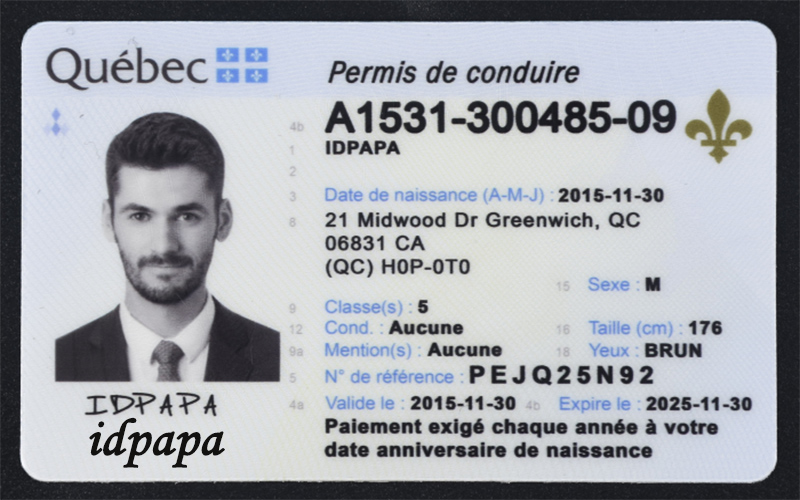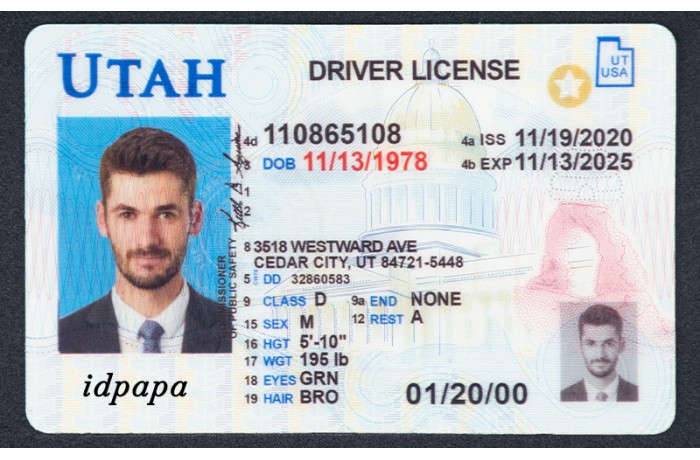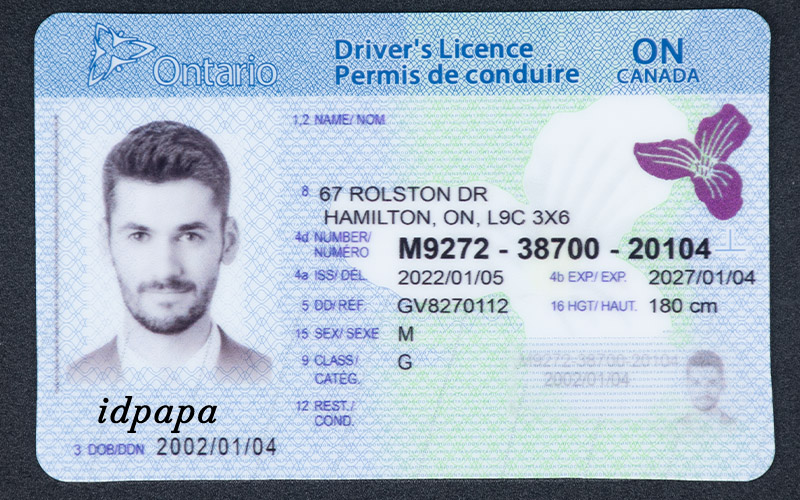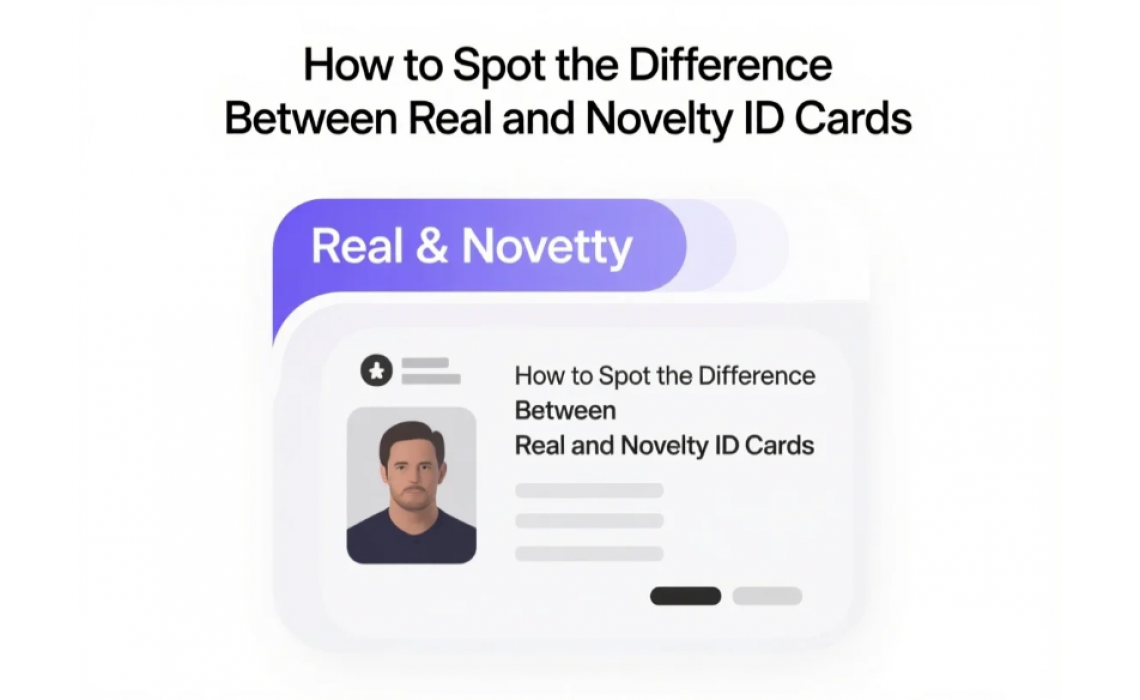How to Spot the Difference Between Real and Novelty ID Cards
How to Spot the Difference Between Real and Novelty ID Cards

In a world filled with digital printing and high-quality replication tools, telling the difference between a real government-issued ID and a novelty ID can be tricky, especially at a glance. Whether you’re a business owner, a bouncer, or just a curious buyer, it’s important to know how to identify the subtle differences.
Not all fake-looking IDs are meant for crime. Some are made specifically for fun, personal use, or creative expression — also known as novelty IDs. But knowing the difference could save you from being scammed or accidentally breaking the law.
What Is a Novelty ID?
A novelty ID is a non-official identification card that looks realistic but is not issued by a government or regulatory authority. Unlike legal documents used for age verification, travel, or government services, novelty IDs are created purely for entertainment, personalization, or educational use. People use novelty IDs for fun purposes like social media videos, gag gifts, collecting, cosplay or costume events, and even as educational tools for learning about ID design. These cards are commonly featured in viral skits, party pranks, or themed events where realism adds to the fun, but legality is never the goal.
At sites like IDPapa, these IDs are sold as novelty items only — not for deception or legal identification. Responsible providers take care to include small design changes, disclaimers, or intentional formatting differences that make the cards distinguishable from real IDs when examined closely. This ensures that customers can enjoy the look and feel of a realistic ID while still staying within the bounds of legality. When used correctly, novelty IDs are harmless, creative tools for self-expression, humor, and curiosity.
Key Differences: Real ID vs. Novelty ID
1. Holograms & UV Features
Real IDs often have embedded holograms and UV-reactive elements that glow under blacklight. These features are security measures used by governments to prevent forgery and make authentic IDs difficult to replicate. When held at different angles or placed under UV light, the holograms reveal hidden images, symbols, or seals that are not visible to the naked eye. These elements are usually embedded into the card during a secure manufacturing process, and they are carefully inspected by authorities, security staff, or barcode scanners to confirm authenticity.
Novelty IDs may mimic these effects, but they’re usually not fully functional under UV inspection. Some novelty cards might include reflective overlays or printed holographic-style graphics to look realistic, especially under normal lighting. However, under actual blacklight conditions, they typically lack the reactive glow or fine detail present in real government-issued IDs. This difference helps distinguish a novelty ID from a legitimate one during close examination, which is why responsible novelty ID sellers indicate that their products are not meant to deceive.
2. Barcodes & Magnetic Strips
Government IDs use barcodes or magnetic strips that are machine-readable and contain encrypted personal data. These elements are built into official identification cards to streamline identity verification processes. When scanned, the barcode or magnetic strip can pull up information such as your name, birthdate, license status, and more — all of which must match the visible details on the ID. This kind of data security ensures that only authentic government-issued cards can be validated by law enforcement or official systems.
Novelty IDs may have dummy barcodes that don’t scan or contain generic placeholder information. These barcodes are typically added for visual effect — to make the ID look as close to real as possible — but they are non-functional. In most cases, if someone attempts to scan a novelty barcode, it will either produce a generic result or no data at all. Likewise, magnetic strips on novelty cards are usually decorative and do not store any scannable data.
![]() Tip: At IDPapa order, novelty cards include scannable-like features for realism, but they're not connected to any official database. This allows users to enjoy the realistic appearance and feel of a real ID, while ensuring that the card cannot be used for fraudulent purposes. It's a safe and responsible way to enjoy novelty identification without crossing any legal lines.
Tip: At IDPapa order, novelty cards include scannable-like features for realism, but they're not connected to any official database. This allows users to enjoy the realistic appearance and feel of a real ID, while ensuring that the card cannot be used for fraudulent purposes. It's a safe and responsible way to enjoy novelty identification without crossing any legal lines.
3. Card Thickness and Feel
Real IDs use secure polycarbonate materials that are hard to bend or tear. These materials are chosen specifically for durability and resistance to tampering. Government-issued identification cards are designed to withstand years of daily use — being kept in wallets, exposed to sunlight, and frequently handled. The card’s rigidity, weight, and slightly textured finish all contribute to its authentic feel, making it easy for officials to identify real IDs by touch alone.
Novelty IDs might be slightly lighter or printed on cheaper plastic, depending on the quality. While some high-end novelty cards are made with premium materials to closely mimic the real thing, many lower-cost versions are printed on thinner PVC or laminate plastic. These may look similar at a glance but feel flimsier when held, especially around the edges. The texture might also be smoother or glossier than what you'd expect from an official ID.
This difference in thickness and flexibility is often one of the quickest ways to tell a novelty card apart from a legitimate one. If an ID feels unusually bendable, light, or lacks a certain sturdiness, it’s likely a novelty version. While this doesn’t affect its value as a collectible or party prop, it’s important to remember that real ID cards are built for security — not just appearance.
4. Fonts, Microtext & Layout
Real IDs follow strict formatting and font rules and often include microtext that's hard to fake. Each state or country typically uses a very specific typeface, font size, and spacing that is standardized and difficult to replicate. These elements are often printed with specialized machines that apply text at a microscopic level, making it nearly impossible to duplicate without professional-grade equipment. This microtext may include license numbers, security phrases, or issuing authority details — and is a key part of what makes real IDs so secure.
Novelty IDs might have subtle font or spacing differences on purpose to avoid being classified as counterfeit. These adjustments are intentional and help distinguish the ID as a novelty item rather than a forgery. You might notice slightly different letter thickness, spacing between lines, or simplified microtext that's either missing or visibly altered. This ensures that while the ID looks realistic for casual use, it cannot be easily confused with a legitimate government-issued document under close inspection or official scanning.
5. Use of the ID
If someone is using the ID to prove legal age or identity, it should raise a red flag if it doesn’t pass standard checks. This includes situations like purchasing alcohol, entering age-restricted venues, applying for official documents, or dealing with law enforcement. In such contexts, identification must meet strict legal and technical standards. Any ID that fails basic verification — whether due to formatting, barcode issues, or visible inconsistencies — should be treated with caution. Using a fake or novelty ID in this way can result in serious legal consequences, not just for the user but sometimes for the businesses involved as well.
But if it’s used in a casual or social context, chances are it’s a novelty card — especially if it's humorous or stylized. These kinds of uses include pranks, party favors, cosplay, or even personalized collector items. The intent behind the use is usually harmless and obvious. For example, someone flashing an “alien hunter” ID at a birthday party is not trying to impersonate a government official. These novelty IDs often include humorous photos, fake job titles, or funny slogans that make it clear they’re meant for entertainment.
The key difference is how and where the ID is being used. Real-world legal settings require real identification, while informal environments — like social media videos or themed events, often welcome novelty items. If you're ever unsure, context is everything. A novelty ID may look realistic, but its purpose and the way it's used typically set it apart from anything intended to deceive or defraud.

Warning Signs of a Counterfeit (Not Just a Novelty)
Some fake IDs are created with the intent to deceive, which makes them illegal. Here’s how to spot them:
●The data (name, photo, age) seems suspicious or too perfect
●The barcode scans successfully but shows conflicting info
●The individual becomes defensive or evasive when questioned
●There’s no manufacturer disclaimer (like "For novelty use only")
If an ID is being presented for official access (clubs, flights, job applications), and you suspect it’s not real, always err on the side of caution.
How to Handle Novelty IDs Safely
If you're buying one: make sure the site clearly states it’s for novelty use only. Legitimate providers like IDPapa blogs emphasize that their products are not intended for official or illegal use. Don’t try to use it as a real ID — anywhere. That includes bars, airports, government offices, or any location that requires legal identification. Instead, use it strictly for fun, props, or entertainment — like birthday parties, cosplay, or social media videos. And always respect the laws of your region or country, as regulations around novelty ID ownership and design can vary widely.
If you're checking one: look for the signs listed above, such as missing holograms, unusual fonts, or dummy barcodes. A real ID should pass UV or holographic inspection, while a novelty one typically won’t. Use a flashlight or UV scanner if you have one — many official IDs have hidden security features that only appear under certain conditions. Finally, check the back barcode or magnetic strip. Real IDs will scan and return verified data, while novelty cards often have generic or non-functional codes. Knowing what to look for helps you stay compliant, whether you're using or reviewing a novelty ID.

Final Thoughts
Being able to spot the difference between real and novelty ID cards is more important than ever in 2025. While novelty IDs are fun, legal, and used for entertainment, real IDs are secured for government and institutional use — and mistaking one for the other can have serious consequences.
When in doubt, always buy from a trustworthy provider like IDPapa.org, and never use novelty IDs to misrepresent who you are. Use them the right way — and they’ll always be a fun and safe addition to your collection.


